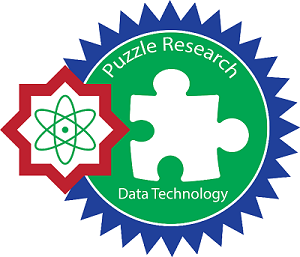ADDITIONAL MENU
Prediction of Indonesia School Enrollment Rate by Using Adaptive Neuro Fuzzy Inference System
Abstract
The study aimed to predict the school enrollment rate in Indonesia using the Adaptive Neuro Fuzzy Inference System (ANFIS). ANFIS is a combination of fuzzy inference system and artificial neural networks. The study used the Gaussian and Gbell membership functions to make the predictions. The results were evaluated using the R square score (coefficient of determination) and Mean Square Error methods. The results showed that the model performed well in predicting the school enrollment rate, particularly in the age categories of 7-12 years and 13-15 years. The R square score for these categories was 0.981551771 and 0.989081085, respectively, while the Mean Square Error was 0.023947290 and 0.3675162695238, respectively. The performance of the model in the age categories of 16-18 years and 19-24 years was also good, but with a slightly lower R square score and Mean Square Error compared to the younger age categories. When using the Gaussian membership function, the model performed even better, particularly in the age categories of 13-15 years and 19-24 years. The R square score for these categories was 0.99020792 and 0.9883091, respectively, while the Mean Square Error was 0.32958834 and 0.31523466571, respectively. Overall, the study demonstrated that ANFIS is a suitable method for predicting school enrollment rate in Indonesia. The results from this study can provide useful information for decision makers in the education sector, who can use the model to make informed decisions about future educational policies and programs.
Keywords
Adaptive Neuro-Fuzzy Inference System, School Enrollment Rate, Prediction
Full Text:
PDFReferences
T. Vasileva-stojanovska, M. Vasileva, T. Malinovski, and V. Trajkovik, “An ANFIS model of quality of experience prediction in education,” Applied Soft Computing Journal, vol. 34, pp. 129–138, 2015, doi: 10.1016/j.asoc.2015.04.047.
V. Patsiou et al., “Education level predicts mortality and morbidity in hospitalised patients with atrial fibrillation,” Hellenic Journal of Cardiology, vol. 65, pp. 19–24, 2022, doi: 10.1016/j.hjc.2022.03.005.
J. R. Jang, “Neuro-Fuzzy Modeling,” vol. 83, no. 3, 1995.
J. A. Goguen, “L. A. Zadeh. Fuzzy sets. Information and control, vol. 8 (1965), pp. 338–353. - L. A. Zadeh. Similarity relations and fuzzy orderings. Information sciences, vol. 3 (1971), pp. 177–200.,” The Journal of Symbolic Logic, vol. 38, no. 4, pp. 656–657, Dec. 1973, doi: 10.2307/2272014.
T. Bilgig, I. T.-H. of G. Computing, and undefined 2008, “Membership Functions,” books.google.com.
B. Heydari, E. Abdollahzadeh Sharghi, S. Rafiee, and S. S. Mohtasebi, “Use of artificial neural network and adaptive neuro-fuzzy inference system for prediction of biogas production from spearmint essential oil wastewater treatment in up-flow anaerobic sludge blanket reactor,” Fuel, vol. 306, no. August, p. 121734, 2021, doi: 10.1016/j.fuel.2021.121734.
Y. Dissou, S. Didic, and T. Yakautsava, “Government spending on education , human capital accumulation , and growth ☆,” Econ Model, vol. 58, pp. 9–21, 2016, doi: 10.1016/j.econmod.2016.04.015.
Kemendikbud, “Indonesia Educational Statistics In Brief,” 2018.
H. Chyi and B. Zhou, “The effects of tuition reforms on school enrollment in rural China,” Econ Educ Rev, vol. 38, pp. 104–123, 2014, doi: 10.1016/j.econedurev.2013.11.003.
Direktorat Statistik Kesejahteraan Rakyat, “Cover depan STATISTIK PENDIDIKAN 2021 i,” Badan Pusat Statistik, 2021.
DOI: http://dx.doi.org/10.24014/ijaidm.v6i1.21839
Refbacks
- There are currently no refbacks.
Office and Secretariat:
Big Data Research Centre
Puzzle Research Data Technology (Predatech)
Laboratory Building 1st Floor of Faculty of Science and Technology
UIN Sultan Syarif Kasim Riau
Jl. HR. Soebrantas KM. 18.5 No. 155 Pekanbaru Riau – 28293
Website: http://predatech.uin-suska.ac.id/ijaidm
Email: ijaidm@uin-suska.ac.id
e-Journal: http://ejournal.uin-suska.ac.id/index.php/ijaidm
Phone: 085275359942
Journal Indexing:
Google Scholar | ROAD | PKP Index | BASE | ESJI | General Impact Factor | Garuda | Moraref | One Search | Cite Factor | Crossref | WorldCat | Neliti | SINTA | Dimensions | ICI Index Copernicus
IJAIDM Stats










